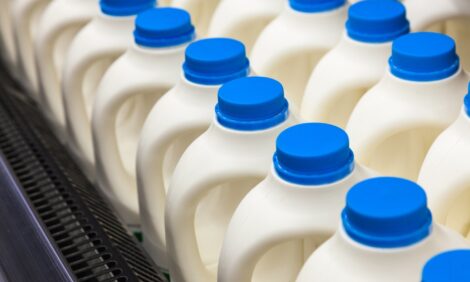



Hay-poor Dairy Farmers Consider Sending Cows to Slaughter
FINLAND - After a dry summer, many farmers in the south and west predict that they will only harvest half of their normal yield. This bodes poorly for Finland's livestock.This year's grain harvest in Finland will be 2.8 million tons - the lowest yield so far this millennium, according to an estimate from the Natural Resources Institute Finland (Luke).
YLE News reports that data collected by regional Pro Agria Rural Advisory Centres in Finland shows that this summer's drought was most severe in the regions of Southwest Finland, Satakunta in the west, and Uusimaa in the south.
Farmer Markku Erelä says the dry summer has taken a toll on his red clover and timothy grass crops in Loimaa's Alastaro area in southwest Finland.
"We'll be lucky to get half of our normal yield. As for the grain harvest, we'll only be able to say with more accuracy once we've gotten everything in from the fields," he says.
Some farmers in the area are simply ploughing over their patchy fields to prepare for a new round of sowing, instead of bringing in the meagre crop.
"Growth is very uneven. The plants never sprouted. All the early sown varieties such as barley and oats suffered the most," Erelä says.
Silos are empty
Dairy farm owner Seija Kairinen from the southwest municipality of Masku says her farm has only received 50 millimetres of rain so far this summer. Her husband has had to regularly water the hay fields in an attempt to safeguard their livestock's supply. The poor yield has Kairinen thinking about which animals she might have to send to the slaughterhouse.
"We will have to start eliminating them, one by one. This morning I found myself looking at the lists with that in mind. There's no hay anywhere around here, and we don't have the money to buy it," she says.
She says that if it were up to her, she wouldn't let go of any of her milk cows, but the farm's silos are empty and the hay growing in the fields is wilting. She says the farm has received some shipments of hay from the neighbouring municipalities of Sastamala and Orimattila, but it's not enough. And the problems haven't been limited to the drought this season.
"This has been a very difficult summer. Caring for the livestock in 30-degree Celsius temperatures has been tough. The cows are tired; just like we are. The work was just murder. We didn't have a single day of holiday. Watering our hay fields has been very expensive," she says.
Ms Kairinen wishes that dairy farms in her area would receive more support from the state.
"We've got the third-worst silage grass harvest in Finland here in the southwest, but even so, the support local dairy farmers get is non-existent compared to what they get in Central Finland. This part of the country is just not the easiest place for growing those crops," she says.
Filling in gaps with shipments from the east
Fields in eastern parts of Finland have received more rain than many other parts of the country, so the hay and cereal harvest is expected to be much better there.
Farmer Otto Kokkila from Petäjävesi, near Jyväskylä, says that the drought hasn't applied to the whole region.
"There are massive regional differences in how much rain [various] areas have received, even within a 30-kilometre radius," he says.
Antti Waris, an agrologist at Finland's rural lobbying group MTK, says that this year might see a role-reversal in Finland's agricultural community.
"Traffic in cereals will probably move in a slightly different direction this autumn. Before, grains were usually transferred from the south to the north and east. This year, the east might be shipping to the rest of Finland," he says.
TheCattleSite News Desk


